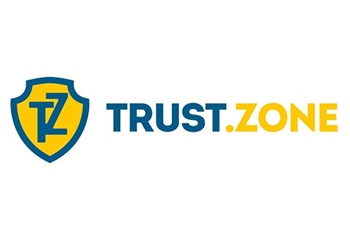Breaking the Glass Ceiling Empowering Women in the Business World
In today's rapidly evolving society, the empowerment of women in the business world is a topic of utmost importance. Breaking the glass ceiling, a metaphorical barrier that prevents women from reaching top leadership positions, has become a crucial goal for organizations worldwide. This article delves into the challenges faced by women in the business world, explores the importance of gender diversity, and provides strategies for empowering women in their professional pursuits.
Understanding the Glass Ceiling
The glass ceiling refers to the invisible barrier that obstructs women's progress in the corporate world, hindering their advancement to top-tier positions. This barrier is often rooted in systemic gender biases and societal expectations, making it essential to address and overcome.
Historical Perspective: Women in Business
Throughout history, women have faced numerous challenges when it comes to establishing themselves in the business world. Discrimination, unequal opportunities, and societal expectations have often hindered their progress. However, despite these obstacles, women have persistently strived to overcome barriers and make significant contributions to various industries.
In the early years, women's involvement in business was limited, primarily due to societal norms and cultural expectations. They were often confined to traditional roles such as homemakers and caregivers, with limited opportunities for education and professional development. The prevailing belief was that women's place was primarily within the home, and their contributions to the business world were largely overlooked.
However, as societal norms began to shift, women started to challenge these traditional roles and pursue careers in business. The suffrage and women's rights movements of the late 19th and early 20th centuries played a pivotal role in empowering women and advocating for their equality in all aspects of life, including business.
The first significant milestone for women in business was the right to vote. The suffrage movement fought tirelessly for women's political rights, and in 1920, the 19th Amendment to the United States Constitution was ratified, granting women the right to vote. This was a groundbreaking achievement that paved the way for women's increased involvement in decision-making processes and political leadership.
In the subsequent decades, women made notable strides in various fields of business. During World War II, for example, with many men serving in the military, women stepped into roles traditionally held by men in factories and businesses, showcasing their ability to contribute effectively to the workforce. This period marked a significant turning point in women's economic participation and challenged the notion that they were only suited for certain types of work.
As the feminist movement gained momentum in the 1960s and 1970s, women demanded equal access to education, employment, and career advancement opportunities. The passage of laws such as the U.S. Equal Pay Act in 1963 aimed to eliminate gender-based wage disparities. However, progress remained slow, and it took additional efforts and legislative actions to address gender inequalities in the workplace fully.
The 1980s and 1990s witnessed a surge of women breaking through the glass ceiling and assuming leadership positions in various industries. Women pioneers, such as Indra Nooyi, Ursula Burns, and Oprah Winfrey, shattered stereotypes and inspired a new generation of aspiring female entrepreneurs and executives. Their achievements demonstrated that women could excel in traditionally male-dominated sectors and achieve remarkable success.
Gender Equality: The Business Case
Gender diversity in leadership positions has been proven to benefit businesses in various ways. Research shows that companies with diverse leadership teams perform better, make more informed decisions, and foster innovation. Embracing gender equality is not only a matter of social justice but also a strategic move for organizations to thrive in today's global marketplace.
Challenges Faced by Women in the Workplace
Gender Bias and Stereotypes
Deep-rooted gender biases and stereotypes continue to hinder women's progress in the business world. Preconceived notions about women's abilities, leadership styles, and commitment often limit their career advancement opportunities.
Lack of Mentorship and Sponsorship
The absence of strong mentorship and sponsorship programs for women contributes to the glass ceiling effect. Mentorship provides guidance, support, and networking opportunities, while sponsorship involves influential individuals advocating for the advancement of women in their careers.
Work-Life Balance
Balancing professional responsibilities with personal commitments remains a significant challenge for many women. Societal expectations, lack of flexible work arrangements, and limited access to affordable childcare often force women to make difficult choices, impacting their career progression.
Limited Access to Opportunities
Women often face barriers in accessing high-profile projects, promotions, and decision-making roles. These barriers can be attributed to biased selection processes, exclusion from networking opportunities, and the absence of equal representation in key positions.
Empowering Women: Strategies for Success
To break the glass ceiling and empower women in the business world, several strategies can be implemented:
Cultivating Confidence and Assertiveness
Building self-confidence and assertiveness is crucial for women to navigate the challenges they encounter. Developing these skills through training programs, workshops, and coaching can empower women to overcome obstacles and seize opportunities.
Developing Leadership Skills
Equipping women with leadership skills is essential for their upward mobility. Providing access to leadership development programs, mentoring relationships, and executive education opportunities can enhance their ability to assume senior positions.
Establishing Supportive Networks
Creating networks and communities that foster collaboration, mentorship, and knowledge-sharing among women is instrumental in overcoming the isolation often experienced in male-dominated industries. These networks provide a safe space for women to exchange ideas, gain support, and expand their professional connections.
Promoting Work-Life Integration
Organizations can support work-life integration by implementing flexible work arrangements, offering family-friendly policies, and promoting a culture that values work-life balance. This allows women to meet both personal and professional commitments without compromising their career aspirations.
Implementing Diversity and Inclusion Initiatives
Organizations must commit to fostering a diverse and inclusive workplace culture. This involves implementing policies and practices that ensure equal opportunities for all employees, regardless of gender. Diverse teams and inclusive decision-making processes lead to better outcomes and drive innovation.
Success Stories: Inspirational Women Leaders
Highlighting the achievements of inspirational women leaders serves as a source of motivation and inspiration for aspiring professionals. Sharing success stories showcases the possibilities and potential for women to excel in the business world, breaking down barriers and encouraging others to strive for success.
Conclusion
Breaking the glass ceiling and empowering women in the business world is not only a matter of fairness but also a strategic imperative. By addressing gender biases, providing equal opportunities, and implementing supportive policies, organizations can create an environment that fosters the success and advancement of women. Together, we can build a more inclusive and diverse business landscape.
FAQs
What is the glass ceiling?
The glass ceiling refers to the invisible barrier that prevents women from reaching top leadership positions in the corporate world.
Why is gender diversity important in the business world?
Gender diversity in the business world brings a range of benefits, including better decision-making, improved performance, and increased innovation.
How can organizations empower women in the workplace?
Organizations can empower women by promoting gender equality, providing mentorship and sponsorship programs, offering leadership development opportunities, and implementing diversity and inclusion initiatives.
Are there any successful women leaders in business?
Yes, there are numerous successful women leaders in the business world who have broken through the glass ceiling and achieved remarkable success.
How can individuals support the empowerment of women in the business world?
Individuals can support the empowerment of women by advocating for gender equality, mentoring and sponsoring aspiring women professionals, and promoting inclusive practices within their organizations.


/images/2023/03/22/avira_phantom_vpn_review.jpg)






 English (US) ·
English (US) ·